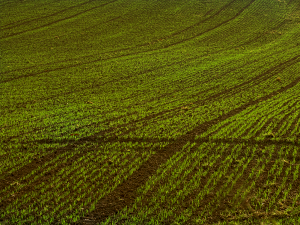 Northwest Region Crop Report Prepared by: Manitoba Agriculture
Northwest Region Crop Report Prepared by: Manitoba Agriculture
July 7, 2020 |
Northwest Region
There was precipitation throughout the entire region last week along with hot temperatures. Rainfall amounts were 40 to 50mm through Swan River, Ste. Rose/McCreary, The Pas and 75mm around Roblin area. There is water pooling in low-lying areas and some fields are saturated. There are reports of overland flooding in the McCreary area causing significant crop damage.
Temperatures hit highs over 30○C causing humid conditions. Pesticide applications have continued in an attempt to catch up; however, continue to be a challenge due to a very narrow window of ideal environmental conditions. Growth stages for all crops is very spread out in the region due to cool spring weather, dry soils delaying emergence, frost and insect pressure resulting in reseeding. The recent precipitation and hot weather have advanced crops very quickly.
Spring cereals in the region are starting to head out with 80% well into the stem-elongation growth stage. Cereals are generally in good condition although weed control has been a challenge. Winter wheat and fall rye are heading/flowering; winter wheat is in fair to good condition while fall rye is in excellent condition. The fusarium head blight (FHB) risk map is indicating an extreme risk as the current warm humid conditions are occurring when the crop is susceptible to infection (during flowering).
Hot weather and rainfall has advanced the canola with 10% of the crop flowering, 75% in the rosette stage and the balance in the seedling stage. Patchy emergence in canola is becoming very evident with part of the fields bolting/flowering and parts of the same field still in the 2- to 4- leaf stage. Canola crop condition ranges from poor to good with 60% in fair condition. The soybean crop is in the vegetative stage and is in good to fair condition; soybean condition is better in the southern part of the region. Field peas are in full flower and are generally in good to excellent condition. Fungicide applications have occurred in peas and are beginning in wheat. Flax is in good condition.
Bertha armyworm monitoring is underway with highest numbers of moths in traps in Swan Valley (94) and Durban (49) areas. Diamondback larvae have been observed, in low numbers, in canola fields. Cutworms are still causing concern in the Swan River area. The FHB risk is extreme.
The condition of pastures, hay and annual crops for feed has improved in response to last week’s rainfall. However, there are pockets in the region with excess moisture including north of Ste. Rose, as well as The Pas, where pastures have standing water and around McCreary where overland flooding is present. Producers are still waiting for a window of favourable drying weather to resume beef hay harvest but yields will be below normal. Hay fields that were cut but not baled before the rain will have very poor to no feed value. Corn silage crops have benefitted from the rains but are less advanced then normal for this time of year. Livestock water supplies on pastures remain adequate.
